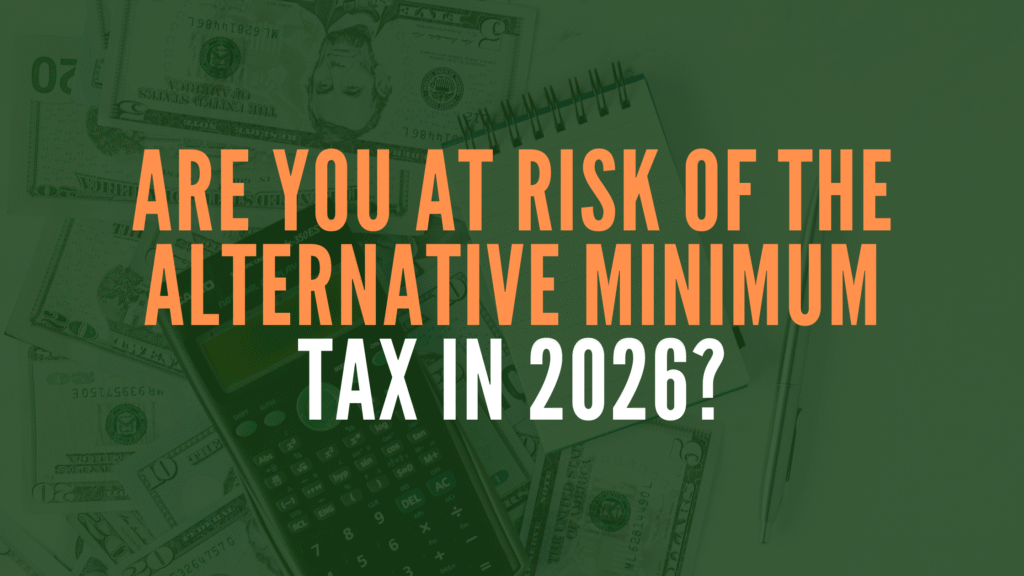The alternative minimum tax (AMT) is one of those tax rules that most people don’t think about until it suddenly applies to them. For years, many taxpayers avoided it thanks to the higher exemption thresholds created by the Tax Cuts and Jobs Act (TCJA). But starting in 2026, the One Big Beautiful Bill Act (OBBBA) changes the math, and more households could find themselves paying AMT again.
A Quick Refresher: What Is the AMT?
The AMT is essentially a parallel tax system. It was originally designed to ensure that higher-income taxpayers who benefit from lots of deductions or tax-preferred income still pay a minimum level of tax. Here’s how it works:
- You calculate your regular tax liability.
- Then you calculate your AMT liability by adding back certain deductions and tax-free income that aren’t allowed under AMT rules.
- If your AMT liability is higher than your regular tax, you pay the AMT instead.
In short, the AMT can take away deductions and credits you might otherwise rely on and increase your overall tax bill.
What’s Changing in 2026 Under the OBBBA
The TCJA made the AMT much less of a threat from 2018 through 2025 by raising exemption amounts and lifting the income thresholds where those exemptions phase out. The OBBBA partially rolls back those breaks, effective in 2026.
Here are the two big shifts:
- Lower Phaseout Thresholds
- For joint filers, the exemption phaseout threshold drops from $1,252,700 (2025) to $1,000,000 (2026).
- For single filers and others, it drops from $626,350 to $500,000.
- For joint filers, the exemption phaseout threshold drops from $1,252,700 (2025) to $1,000,000 (2026).
- Faster Phaseout
- The rate at which your exemption phases out doubles from 25% to 50%.
- Translation: once your income crosses the threshold, you’ll lose the AMT exemption much more quickly.
- The rate at which your exemption phases out doubles from 25% to 50%.
The net result? More people could owe AMT, and those who already trigger it may owe significantly more.
Who’s Most at Risk?
You may be more likely to face AMT liability in 2026 and beyond if you:
- Realize large capital gains from selling stocks, real estate, or collectibles.
- Exercise incentive stock options (ISOs), which are tax-friendly under regular rules but can create AMT income.
- Claim large state and local tax (SALT) deductions disallowed under AMT.
- Use the standard deduction (which AMT rules ignore).
- Hold tax-exempt income from private activity bonds, which is included in AMT calculations.
If you’re in one of the at-risk categories, proactive tax planning can help reduce or manage your AMT exposure:
- Spread out stock option exercises across multiple years rather than triggering a large AMT hit in a single year.
- Time your capital gains and losses strategically to offset income.
- Shift or manage income in years when you’re close to the thresholds.
- Review deductions with a tax advisor to see which ones could trigger AMT treatment.
Even if you end up paying AMT because of timing issues like exercising ISOs there may be relief down the road. The minimum tax credit allows you to claim back some of that AMT in future years by reducing your regular tax liability. While it doesn’t apply in every situation, it can help soften the long-term impact.
The OBBBA’s 2026 changes to AMT rules are a wake-up call for higher earners and those with irregular income. If you fall into any of the risk categories, it’s worth running projections now so you’re not caught off guard when filing your 2026 return. Early planning with a tax professional could save you thousands.

